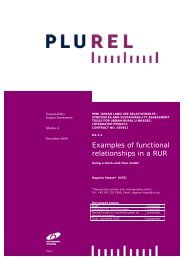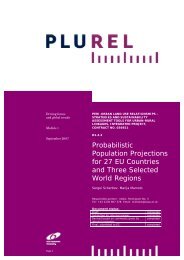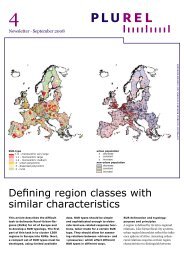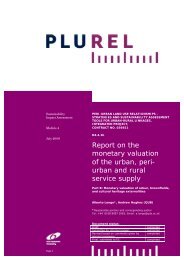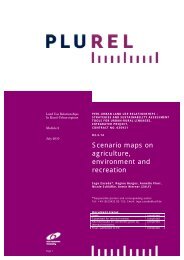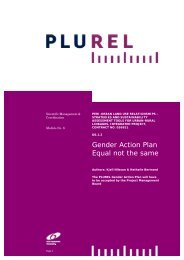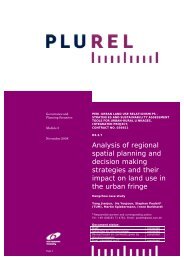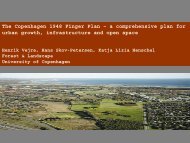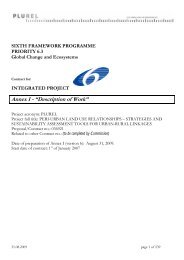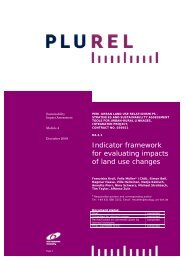Cost benefit analysis of peri-urban land use policy - Plurel
Cost benefit analysis of peri-urban land use policy - Plurel
Cost benefit analysis of peri-urban land use policy - Plurel
You also want an ePaper? Increase the reach of your titles
YUMPU automatically turns print PDFs into web optimized ePapers that Google loves.
Using the carbon prices provided in Table 3, we obtained the economic values <strong>of</strong> climate<br />
regulating services <strong>of</strong> the golf course. See the table below.<br />
Table 6: Carbon sequestration <strong>benefit</strong>s<br />
Aggregate estimated economic value<br />
(2009€/year)<br />
Low<br />
(0.35 tC/ha/year)<br />
High<br />
(1.01 tC/ha/year)<br />
Years 2010-2019 1203.66 3473.42<br />
Years 2020-2029 1561.10 4504.90<br />
Years 2030-2039 1736.97 5012.40<br />
Employment effects<br />
The employment effects <strong>of</strong> a golf course development can be significant. For example, an 18-<br />
hole golf course in Eastern Europe employs 32 people on average, comprising 27 full-time and<br />
5 part-time employees (KPMG, 2007). In addition, there is employment during the stage <strong>of</strong><br />
course construction. However, if we assume a case <strong>of</strong> full employment, then the employment<br />
effects should not be considered in a cost-<strong>benefit</strong> framework. The marginal impact on<br />
employment between the golf course and vineyard may be significant – and if it could be<br />
shown that the employment market was not clearing then these impacts 10 – and associated<br />
health <strong>benefit</strong>s or losses in terms <strong>of</strong> reduced/increased mortality (Markandya, 2000) could be<br />
taken into account.<br />
Ancillary housing development<br />
There is <strong>of</strong>ten ancillary housing development alongside a golf course <strong>of</strong> this type. However, we<br />
do not have data on the plans for housing development in the Koper case.<br />
10 Note that in the assumption <strong>of</strong> market clearing in the employment market we are assuming there is<br />
no structural unemployment. This is a common assumption in <strong>analysis</strong> <strong>of</strong> this type.<br />
Page 20 • PLUREL report No 4.4.3 • December 2010




